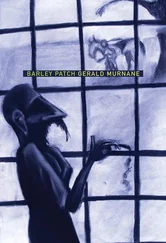Even the discerning reader who is also a student of narration — even he or she might struggle so far to classify the narrator of this present work and might struggle further as the work becomes more complicated in later pages. It is not for me to define myself, as it were. The reader should think of me as a personage as being in some respects less than an actual person and in other respects rather more so. At the very least, I am a voice: the voice behind the text. At the risk of confusing the undiscerning reader, I might well describe myself as the voice of another sort of personage who has been scarcely mentioned as yet in this work: the author or, rather, the implied author, by which I mean the personage of whom nothing is known except what can be inferred from this text. At the very least, I am a voice, but who knows what I might not seem to the discerning and sympathetic reader before he or she has read to the end of these pages, which are, let it be remembered, a sequence of sentences composed by a human hand long before they sounded to any reader as though recited by a mere voice.
I mentioned earlier in this section my being impelled to trust fictional narrators. This must not be taken to mean that I consider the subject-matter of a trustworthy narrator as anything but fiction. Never, while reading any novel by Thomas Hardy, for example, would I mistake, or even wish to be able to mistake, the text in front of me for a report of actual matters or a description of actual persons in actual places. I acknowledge that many another reader looks to fiction for what he or she might call a deeper understanding of actual persons or events or moral issues, so to call them. I am well aware that scholars are able to name actual or historical persons or places that are the originals, so to speak, or the inspiration for fictional counterparts. (Only the other day, I found in a handsome illustrated selection of poems by Thomas Hardy a reproduction of a painting with the title ‘Tess’s Cottage and Evershot Church’. I have already forgotten most of the details of the reproduction. Nor am I curious to learn why the cottage is so named. If it is claimed to have some or another connection with the fictional character Tess Durbeyfield, then I can only marvel at how far the depicted cottage is from any of the scenery where I have located the fictional personage known to me as Tess Durbeyfield during the past fifty and more years.) Even so, I can only state what clear-sighted observation has taught me, which is that many a fictional character, so to call him or her, has become, from the moment when I first learned of his or her fictional existence, a far from fictional personage in a far from fictional setting that happens to be, among other things, the setting for this and every other of my works of fiction. And if I report that I trust certain narrators, I am thereby announcing my confidence that those fictional presences would approve of the previous sentence.

One of the many sorts of fiction that became briefly fashionable during the past fifty years was called by most commentators self-referential fiction . I can recall reading several examples of such fiction in the 1970s, or was it the 1980s? Self-referential fiction was never more than a small part of the body of fiction published at the time, but those who wrote it or praised it seemed to suppose that no sort of self-referential works of fiction had been published in earlier times and, predictably, that writers and readers would soon agree that self-referential fiction was better able than more traditional modes to achieve the aims of fiction, whatever they might be. In the 1970s and the 1980s, I was easily deceived as a reader. Even so, I was just sufficiently alert to be able privately to refute the claims of the advocates of self-referential fiction. I had read Tristram Shandy and some of the fiction of Anthony Trollope and much of the fiction of Thomas Hardy. I admit that I was dazzled at first by If on a Winter’s Night a Traveller , by Italo Calvino, but I did not fail to note soon afterwards how little I could recall of its intricate contrivances or of the seeming-qualities of its glib narrator, not to mention its stock characters, and if I think of the book nowadays I think of its author as someone for whom writer and reader are opposed to one another as the players on either side of a chessboard are opposed. Even the undiscerning reader of this fiction of mine should have understood by now that I, the narrator, would dread to feel that we were separated even by these sentences.
I can recall today no instance of my admiring some or another work of self-referential fiction, much less of my trying to write such a work. (I will explain briefly in the following paragraph why this present work of fiction is not self-referential, although it may have seemed so already to a certain sort of undiscerning reader.) The more extreme examples of their kind repelled me. The narrators of these works would sometimes pause in their reporting and would affect to be unable to decide which of several possible courses of events should follow from that point or, as an undiscerning reader might say, what should happen to the chief characters. And yet, I myself was not discerning enough at that time to be able to explain to myself why I turned away instinctively from such writing.
The narrators who postured in front of their readers and who wondered aloud, as it were, what fates to assign to various characters, were deriving enjoyment, so I now believe, from what they supposed was the dispelling of an illusion held by most, if not all, of their readers. The illusion is that the characters described in fiction are, if not actual persons of the same order as the readers themselves, ideal persons, so to call them, who live out their lives in the same sorts of place as are depicted in films while their authors are required merely to report on them in the way that the makers of films observe their characters. It is not for me to guess how many readers of fiction might be under the illusion mentioned or how many of the deluded, so to call them, might have revised their beliefs after having read that the subject-matter of fiction depended on the mere whim of some or another belittler of the long-held trust between reader and narrator. All that I can do is to state here what seems to me self-evident: while the writer and the reader, together with the words that they write or read, may be seen to exist in this, the visible world, what they are pleased or driven to write about or to read about — their subject-matter — is nowhere to be seen: those seeming persons and seeming events and the seeming scenery behind them are present to one writer alone or one reader alone in the cramped foreground of somewhere vast and vague; and while I would never presume to understand the laws or principles operating in either of the two places — the visible or the invisible — I could never doubt that those in the one differ greatly from those in the other and could never consider any writer claiming otherwise to be anything but a fool.
I recalled just now an earlier undertaking of mine to explain in the previous paragraph why this is not a self-referential work of fiction. The discerning reader should have found the promised explanation in the paragraph as it stands. For the sake of the undiscerning reader, I shall repeat the simple fact that I am the narrator of this work and not the author. In the matter of my fate, so to call it, I am no more able to exercise choice than is any narrator of any of the texts going forward in room after room in this wing of the house of two or, perhaps, three storeys where this text is to be understood as going forward, or any character, so to call him or her, in any work of fiction reported to be going forward in any of those rooms.
Читать дальше










